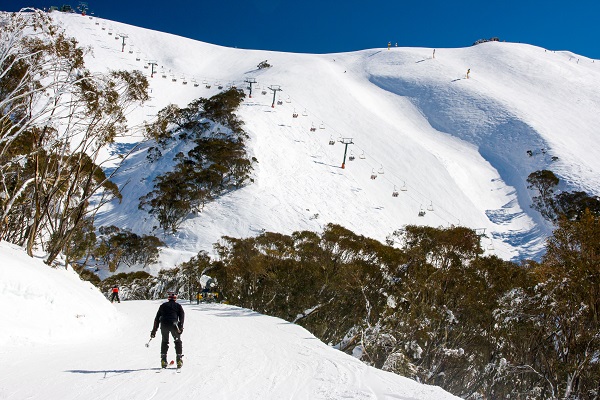Learn About the History Behind Snow In Australia and Its Alpine Regions
Wiki Article
Comprehending the Value of Snow in Australia for Agriculture and Tourist
While Australia is commonly connected with sun-kissed coastlines and arid wilderness, it additionally boasts a riches of snowy alpine regions. The snow that blankets these areas is even more than a picturesque landscape function. It works as a lifeblood for the nation's agriculture and a driving force for a rewarding tourist market. As we explore this unexpected crossway, the potential effect of shifting environment patterns on Australia's snowfall and its subsequent effects come to be a compelling focus.
The Unforeseen Snowfall: Australia's Alpine Regions
When winter months cloaks the world, Australia's Alpine regions put on a white mantle of snow, a phenomenon that seems virtually paradoxical in this dominantly sun-baked land. In contrast to the stereotypical image of Australia as a land of deserts and coastlines, these areas use a unexpected and attractive comparison. The Australian Alps, extending throughout New South Wales, Victoria, and the Australian Funding Region, obtain even more snowfall than Switzerland. This unforeseen winter paradise provides an unique environment, giving a habitat for several indigenous varieties and a snowy playground for winter months sports fanatics. The annual snowfall, although not as plentiful as in some countries, is an important facet of Australia's environment diversity and plays a considerable duty in the country's farming methods and tourism sector.Winter's Bounty: Snow's Payment to Australia's Water Resources
In spite of its rarity in the wider landscape of Australia, snow in the Towering regions plays an important duty in the nation's water sources. This is specifically critical for Australia, a continent often plagued by droughts. Without the bounty of winter season snow, Australia's water sources would be substantially strained, affecting both the environment and the population.White Blanket, Eco-friendly Area: The Effect of Snow on Australian Farming
Although less noticeable, the impact of snow on Australian farming is substantial. Snowfall in the high country works as an all-natural form of irrigation, slowly melting and offering a constant water supply to lower-lying farmland. This water-rich atmosphere cultivates the growth of robust crops, contributing to the nation's agricultural performance. Furthermore, snowfall improves dirt wellness by introducing dampness and trapping nutrients, which are progressively released as the snow thaws. This procedure Does It Snow In Australia enhances the soil, cultivating the development of healthier, a lot more resilient crops. Additionally, snow cover acts as a safety covering, insulating the ground against extreme winter temperature levels that can otherwise harm crops. Thus, the function of snow in Australian farming is both complex and essential.
Cold Cash Money: Snow Tourist and Its Economic Value in Australia
While the value of snow to Australian agriculture is frequently underestimated, its payment to the country's tourism industry is indisputably significant. The snow-laden tops of Australia's alpine areas draw in a flurry of travelers every winter, contributing millions to the nationwide economy. These visitors take part in a range of snow-based activities, from snowboarding and snowboarding to snowshoeing and sledging. The prospering snow tourism industry has actually led to the production of many jobs, from ski teachers to hotel team, boosting regional economic climates in the procedure. The profits generated from snow tourism assists fund different framework tasks and essential services in these regions. Thus, the financial value of snow tourist in Australia prolongs far past the inclines.Future Projection: Climate Adjustment and Its Potential Impacts on Australia's Snowfall
As the world comes to grips with the reality of environment adjustment, so also should Australia contemplate its potential impacts on the country's snowfall. Present clinical designs forecast a decrease in Australian snowfall, with potentially serious influence on both farming and tourist. In some locations, the snow season can be shortened by as much as 80 days by 2050. Such adjustments threaten the stability of Australia's ski sector, which contributes substantially to the regional economy. Much less snowfall can also affect the nation's farming field, as snowmelt plays a vital duty in watering crops. The possible results of these changes underline the urgency of climate change reduction efforts, both in Australia and worldwide.Conclusion
In final thought, snow is an essential component of Australia's agricultural and tourism markets. The looming risk of environment adjustment raises worries about the future of Australia's snowfall patterns, possibly interrupting these considerable economic fields.

When wintertime capes the world, Australia's Alpine areas don a white mantle of snow, a phenomenon that appears almost paradoxical in this dominantly sun-baked land.In spite of its rarity in the wider landscape of Australia, snow in the Alpine areas plays an essential duty in the nation's water sources. Without the bounty of winter snow, Australia's water resources would certainly be dramatically stressed, impacting both the environment and the population.
Thus, the economic importance of snow tourist in Australia prolongs far past the slopes.
In final thought, snow is a crucial element of Australia's farming and tourism sectors. Snow In Australia.
Report this wiki page